

|
| FRANCE | FRANCE |
| région: Grand Est | |
| département: 57, Moselle |
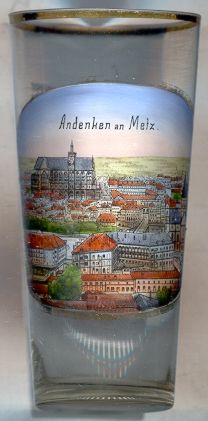
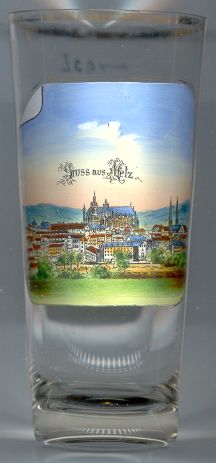 Metz is situated at the confluence of the rivers Moselle (Mosel) and Seille and was the capital of the former région
Lorraine and the chef-lieu of the département Moselle in northeastern France.
Due to its location on the rivers and at the crossroads of two important trading routes from the Adriatic Sea to the North Sea and from
Strasbourg to Reims,
it has a long history. At first it became the capital of the celtic tribe of the Mediomatrics. From 51 BC it developed into a large Roman town (Mediomatricum).
It later became the capital of the Merowingian kingdom of Austrasia, then an intellectual centre of the Carolingians, and an independent city during the Middle Ages.
The town was taken over by King Henri II of France in 1552, but it was only in 1658 through the Treaty of Westphalia that it became part of France.
The commercial role of the town changed to a military one, and the French marshal Sébastien Le Prestre de Vauban (1633–1707) once claimed that "Metz defends the Kingdom".
Between 1800 and 1870 Metz developed into an economic centre again, due to its iron and coal industries. Between 1870 and 1918, and again between 1940 and 1944,
Metz was part of Germany. Since 1945, Metz has continued its development as a commercial and administrative centre.
Metz is situated at the confluence of the rivers Moselle (Mosel) and Seille and was the capital of the former région
Lorraine and the chef-lieu of the département Moselle in northeastern France.
Due to its location on the rivers and at the crossroads of two important trading routes from the Adriatic Sea to the North Sea and from
Strasbourg to Reims,
it has a long history. At first it became the capital of the celtic tribe of the Mediomatrics. From 51 BC it developed into a large Roman town (Mediomatricum).
It later became the capital of the Merowingian kingdom of Austrasia, then an intellectual centre of the Carolingians, and an independent city during the Middle Ages.
The town was taken over by King Henri II of France in 1552, but it was only in 1658 through the Treaty of Westphalia that it became part of France.
The commercial role of the town changed to a military one, and the French marshal Sébastien Le Prestre de Vauban (1633–1707) once claimed that "Metz defends the Kingdom".
Between 1800 and 1870 Metz developed into an economic centre again, due to its iron and coal industries. Between 1870 and 1918, and again between 1940 and 1944,
Metz was part of Germany. Since 1945, Metz has continued its development as a commercial and administrative centre.
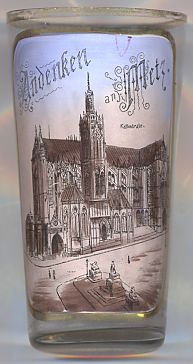
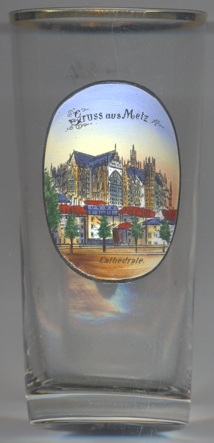
The Gothic  cathedral Saint Étienne (St. Stephen)
[left, no. 2137; right, no. 3224]
was begun in 1220. During the 14th century, the nave was opened up and
attached to the north side of a Romanesque church dating from the 10th and 11th centuries.
Until 1380 the towers had reached a height of 45 m. During the 15th century, a transept and choir were added. The building was completed in 1520.
The windows and the open triforium, which take up two-thirds of the wall space, have remarkable stained glass windows dating from the 14th and 16th centuries.
In the 20th century, these old glass windows were complemented by stained glass windows designed by the painters Marc Chagall and Roger Bissière.
cathedral Saint Étienne (St. Stephen)
[left, no. 2137; right, no. 3224]
was begun in 1220. During the 14th century, the nave was opened up and
attached to the north side of a Romanesque church dating from the 10th and 11th centuries.
Until 1380 the towers had reached a height of 45 m. During the 15th century, a transept and choir were added. The building was completed in 1520.
The windows and the open triforium, which take up two-thirds of the wall space, have remarkable stained glass windows dating from the 14th and 16th centuries.
In the 20th century, these old glass windows were complemented by stained glass windows designed by the painters Marc Chagall and Roger Bissière.
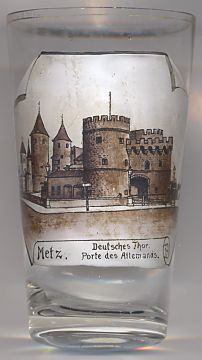
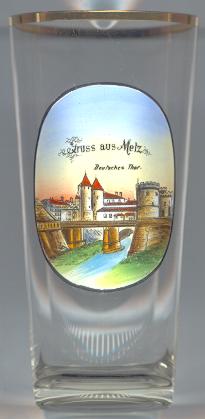
 La Porte des Allemands (Deutsches Tor, German Gate) is named after the
Chevaliers Teutoniques or Frères hospitaliers de Notre-Dame des Allemands (Freires de l'ôpital des Allemans de Mes) who founded a hospital near this site in the 13th century.
The gate is a great example of medieval fortifications, combining the features of gate and fortified bridge. The two towers at the inner side of the gate [left]
were erected in 1230. The two outer towers [right] were built in 1445 in order to defend the port on the river Seille. The towers still bear the traces of the
attacks during the siege of Metz in 1552.
La Porte des Allemands (Deutsches Tor, German Gate) is named after the
Chevaliers Teutoniques or Frères hospitaliers de Notre-Dame des Allemands (Freires de l'ôpital des Allemans de Mes) who founded a hospital near this site in the 13th century.
The gate is a great example of medieval fortifications, combining the features of gate and fortified bridge. The two towers at the inner side of the gate [left]
were erected in 1230. The two outer towers [right] were built in 1445 in order to defend the port on the river Seille. The towers still bear the traces of the
attacks during the siege of Metz in 1552.
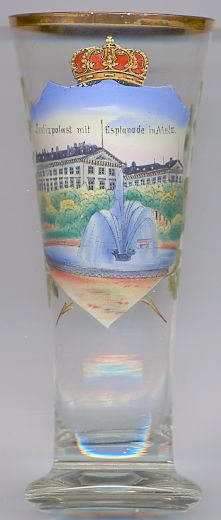
The  Palais
Palais
![[scale]](lineal.jpg)